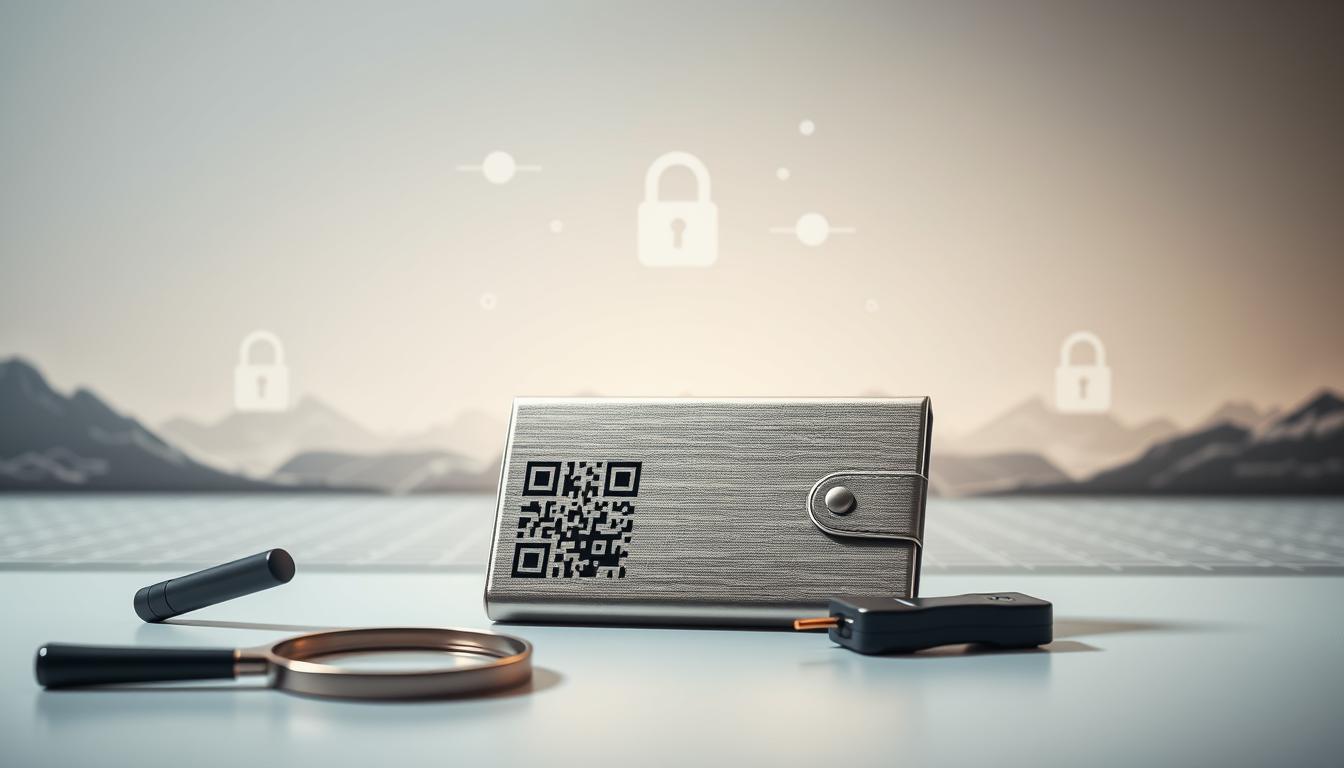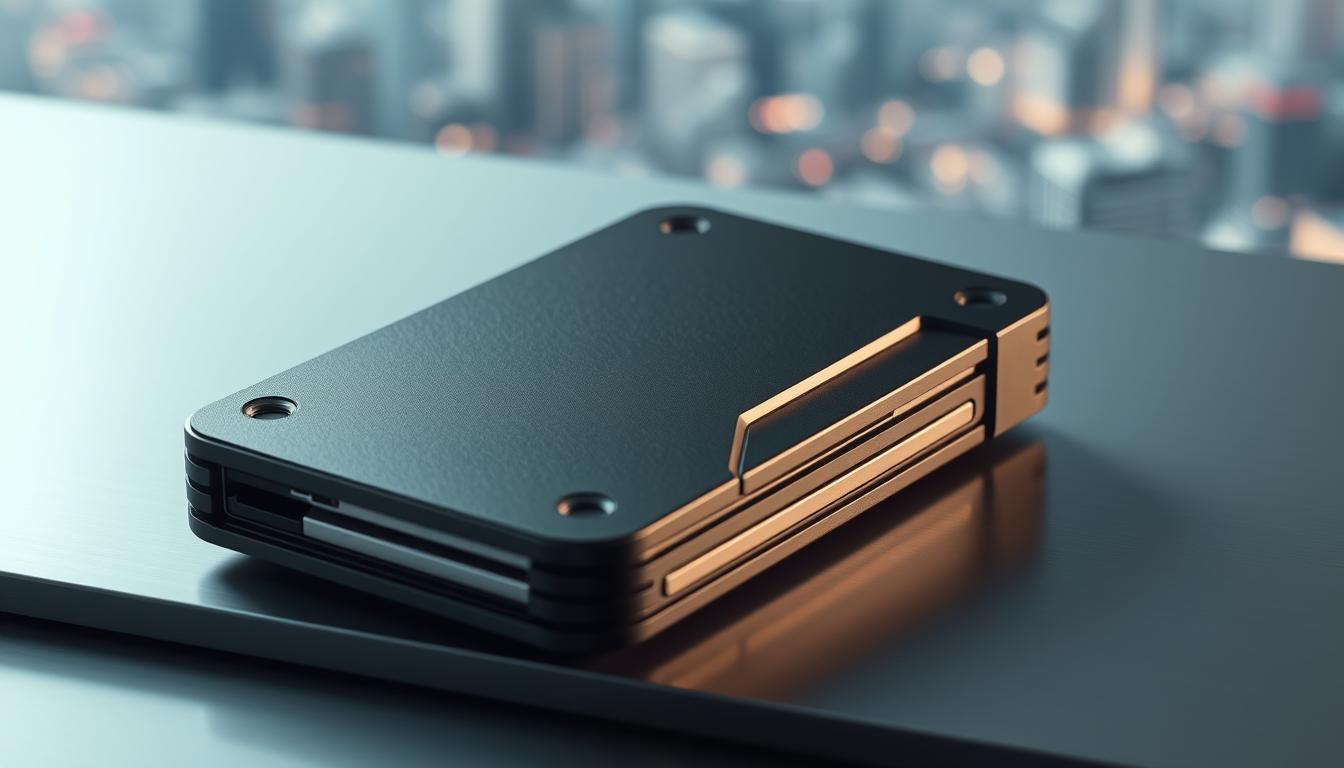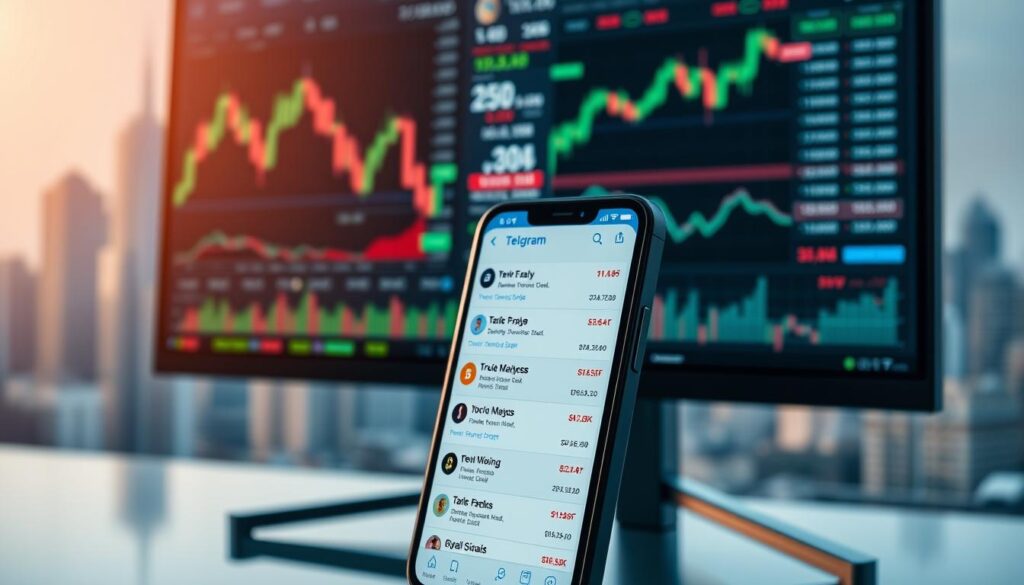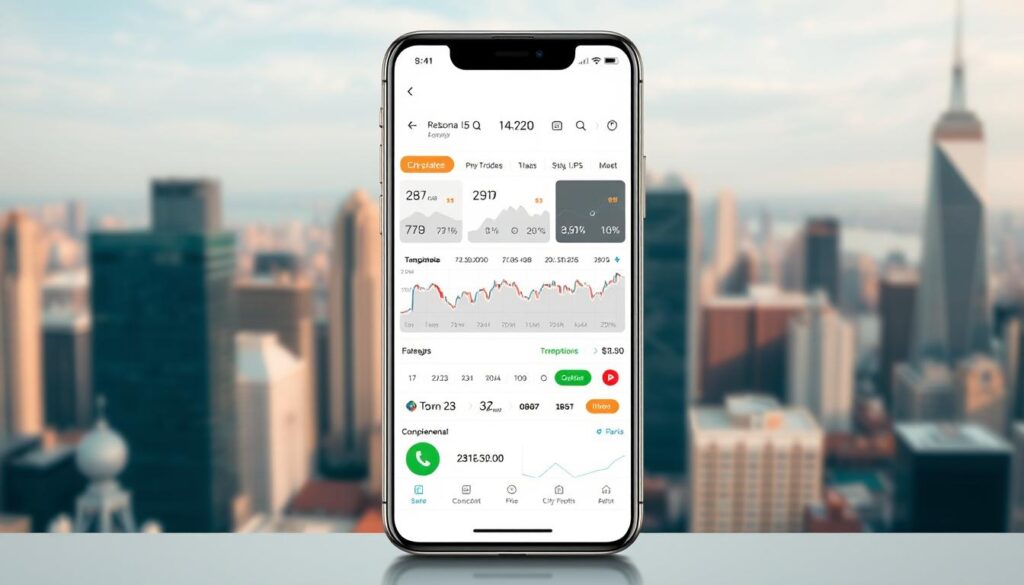Now Reading: Mastering Crypto Wallet Security: A Step-by-Step Guide
- 01
Mastering Crypto Wallet Security: A Step-by-Step Guide
Mastering Crypto Wallet Security: A Step-by-Step Guide

Digital assets are getting more popular, and keeping them safe from cyber threats is crucial. Robust security measures are key to protect your investments.

With the rise of cryptocurrency, hackers are trying harder to steal your money. A comprehensive security guide is vital to fight these threats and keep your digital assets safe.
By taking a step-by-step approach, you can greatly improve the security of your crypto. This will help keep your investments safe.
Key Takeaways
- Understand the importance of robust security measures for digital assets.
- Learn how to protect your investments from cyber threats.
- Discover a step-by-step guide to enhance crypto wallet security.
- Identify best practices for safeguarding your digital assets.
- Stay ahead of potential cyber attacks with a comprehensive security plan.
Understanding the Cryptocurrency Wallet Landscape
Exploring the world of cryptocurrency wallets means knowing the different types and their safety levels. Choosing the right wallet is key to keeping your digital money safe. It’s all about understanding the differences between each type.
Hot vs. Cold Wallets: Key Differences
Cryptocurrency wallets fall into two main groups: hot wallets and cold wallets. Hot wallets stay online, making it easy to use them for quick transactions. Cold wallets, on the other hand, stay offline, offering better security since they’re not connected to the internet.
Security Trade-offs Between Accessibility and Protection
Choosing between hot and cold wallets means picking between ease of use and security. Hot wallets are fast but riskier because they’re online. Cold wallets are safer but less handy for quick use.
Software, Hardware, and Paper Wallet Options
There are many wallet options within the hot and cold categories:
- Software Wallets: Apps for computers or phones, balancing ease and safety.
- Hardware Wallets: Physical devices for offline key storage, very secure.
- Paper Wallets: Physical documents with keys, a cold storage choice.
Security Vulnerabilities in Different Wallet Types
Each wallet type has its own risks. Software wallets can get hacked or infected with malware. Hardware wallets can be at risk if not used right. Paper wallets can get lost or damaged, leading to lost assets. Knowing these risks helps protect your digital money.
Understanding the unique security issues of each wallet type helps users make smart choices. This way, they can better protect their digital assets.
The Fundamentals of Crypto Wallet Security Guide
Keeping your digital assets safe means learning about wallet security. The world of cryptocurrency is always changing. It’s key to know the dangers and how to stay safe.
Common Threats to Cryptocurrency Wallets
Crypto wallets face many dangers, from big cyberattacks to simple loss or theft. Knowing these risks is the first step to protecting your assets.
Malware and Phishing Attacks
Malware and phishing are common hacker tricks. Malware can sneak onto your device and steal your info. Phishing attacks try to get you to share your login details. To learn more about securing your cryptocurrency, visit this resource.
Physical Theft and Loss
Stealing or losing a device with your wallet can also be a problem. This is a big risk for those who keep their crypto on mobile or desktop without security.

Basic Security Principles Every Crypto Owner Should Know
To keep your crypto safe, follow some basic rules. Use strong, unique passwords. Turn on two-factor authentication. And always update your software. These steps can greatly lower the chance of your assets being stolen.
The Importance of Multi-layered Security Approach
Using a multi-layered security approach is key for wallet protection. This means combining things like hardware wallets, two-factor authentication, and strong passwords. By stacking these security steps, you can guard your digital assets against many threats.
Selecting the Right Wallet for Maximum Security
Choosing a wallet that focuses on security is key to protecting your digital assets. With more people investing in digital assets, strong security is more important than ever.
Evaluating Wallet Providers: Reputation and Track Record
When picking a wallet, check the provider’s reputation and history. Go for wallets from well-known companies with a solid security track record. Reliable wallet providers are open about their policies and conduct regular security checks.
Security Features to Look For
A secure wallet must have strong security features. Important ones include:
- Open-Source Code and Audits: Open-source wallets get checked by the community, making them safer.
- Encryption Standards: High-level encryption is crucial for keeping your assets safe.
Open-Source Code and Audits
Wallets with open-source code get community checks, spotting potential issues. Regular audits also keep the wallet secure.
Using advanced encryption, like AES-256, is a top choice for keeping digital assets safe.
Balancing Convenience and Security
Security is crucial, but it shouldn’t come at the cost of ease of use. A wallet that’s too hard to use can lead to mistakes, risking your security.
Setting Up Your Wallet with Security in Mind
To keep your cryptocurrency safe, setting up your wallet with security in mind is key. A secure setup involves several important steps. These steps help protect your digital assets from threats.
Initial Configuration Best Practices
When starting your crypto wallet, follow best practices for a secure start. This means:
- Choosing a reputable wallet provider
- Following the manufacturer’s setup instructions
- Being careful of phishing attempts during setup
Creating Strong Passwords and PINs
A strong password or PIN is your first defense against unauthorized access. To make a good password:
- Use a mix of uppercase and lowercase letters
- Add numbers and special characters
- Avoid using names or birthdays
Password Managers for Crypto Users are great for making and storing complex passwords.
Password Managers for Crypto Users
Password managers help crypto users keep their login details safe. Look for a reputable manager with features like encryption and two-factor authentication.
Enabling Two-Factor Authentication
Two-factor authentication (2FA) adds extra security to your wallet. You can use:
- Authenticator apps for time-based codes
- Hardware keys for physical authentication
Hardware Keys vs. Authenticator Apps
Both hardware keys and authenticator apps are secure, but they’re used differently. Hardware keys are better against phishing, while apps are more convenient. Choose based on your needs.

Mastering Private Key Management
Learning how to manage private keys is key to keeping your digital assets safe. Private keys unlock your cryptocurrency wallets. Losing them or having them stolen can mean losing your money.
Understanding the Critical Role of Private Keys
Private keys are crucial for managing your cryptocurrency. They are created when you make a wallet. They let you sign transactions, proving you own them without sharing your key.
Secure Storage Methods for Private Keys
Keeping private keys safe is a must. You can use hardware wallets, which are devices that keep keys offline. Or, you can use encrypted digital storage solutions.
Digital vs. Physical Storage Solutions
Digital storage, like encrypted files on a computer, is handy but risky. It can be hacked. Physical storage, like metal backups or paper wallets, adds extra security against online threats.
Recovery Phrases: Creation and Protection
Recovery phrases, or seed phrases, help get back into your wallet if you lose your keys. Making a recovery phrase means creating a list of words to recover your wallet.
Secure Methods for Recording Seed Phrases
It’s important to write down seed phrases safely. Use fireproof paper or metal backups to keep them safe. Don’t store them digitally to avoid risks.
By learning how to handle private keys and understanding the need for safe storage and recovery phrases, you can greatly improve the safety of your cryptocurrency.
Implementing Hardware Wallet Security
To keep your crypto safe, learning about hardware wallet security is key. These wallets protect your digital money by keeping private keys offline.
Setting Up Your Hardware Wallet Correctly
When you get your hardware wallet, follow the setup guide closely. This includes:
- Creating a strong PIN
- Generating and safely storing the recovery seed
- Completing any additional verification steps recommended by the manufacturer
Verification Steps for New Devices
Most wallets have a verification process. This checks if the device is real and hasn’t been tampered with. Look for tamper-evident packaging and check the serial number online.
Firmware Updates and Verification
Keeping your wallet’s firmware up to date is vital. Updates fix security issues. Always check updates from the official source.
Physical Security Considerations
Even though hardware wallets protect against digital threats, they’re not safe from physical harm. Consider:
- Storing your wallet in a safe place
- Keeping it away from damage (e.g., water, extreme temperatures)
Tamper-evident Packaging and Seals
Check your wallet’s packaging for tampering signs. Tamper-evident seals show if someone tried to access it before you.

By following these steps, you can greatly improve your crypto security. Remember, keeping your wallet safe is an ongoing task, not just at the start.
Securing Software Wallets on Desktop and Mobile
Software wallets need strong security on desktop and mobile. As more people use cryptocurrency, keeping these wallets safe is crucial.
Device Security Prerequisites
First, make sure your device is secure. This means a few important steps:
- Operating System Updates: Keep your device’s operating system updated to fix bugs.
- Antivirus Software: Use good antivirus software to find and remove malware.
- Firewall Configuration: Turn on and set up your firewall to block unwanted access.
Operating System Hardening Techniques
Hardening your operating system means turning off things you don’t need. This includes:
- Turning off unused network protocols.
- Removing software and apps you don’t use.
- Setting up user permissions to limit access.
App Permissions and Updates
Be careful with the permissions you give when installing a wallet. Check the permissions and only give what’s needed. Also, update your wallet app often to get the latest security fixes.
Isolation Techniques for Enhanced Protection
Adding extra security? Try these isolation methods:
- Virtual Machines: Run your wallet in a virtual machine to keep it separate from your main system.
- Dedicated Devices: Use a device just for your cryptocurrency to avoid mixing it with other apps or malware.
Virtual Machines and Dedicated Devices
Virtual machines or dedicated devices can really boost security. They keep your cryptocurrency activities separate from other risks on your device.
By following these steps, you can make your software wallets much safer on desktop and mobile. This will help protect your cryptocurrency from many dangers.
Protecting Against Phishing and Social Engineering
Phishing and social engineering are big threats to your crypto security. You need to stay alert and take steps to protect yourself. As crypto grows, so do the tricks scammers use to fool people.
Recognizing Common Crypto Scams
Crypto scams come in many forms, like fake emails, websites, or social media tricks. Spotting these scams is key to keeping your digital stuff safe.
Red Flags in Communications
Watch out for messages with:
- Urgent or threatening language
- Poor grammar and spelling
- Requests for sensitive information
- Suspicious links or attachments
Real companies don’t ask for your private info via email or message.
Verifying Wallet Addresses and Transactions
Checking wallet addresses and transactions is vital for keeping your crypto safe.
Address Verification Tools and Methods
Use blockchain explorers to check transaction and wallet details. Always confirm the address before sending crypto.
Tip: Use checksum-enabled addresses to avoid typos.
Safe Communication Practices
To avoid phishing and social engineering, follow safe communication habits. Don’t share private info on public forums or social media.
By knowing these threats and taking steps to prevent them, you can make your crypto much safer.
Backup Strategies to Prevent Asset Loss
Creating reliable backups is key to crypto wallet security. A good backup plan keeps your crypto safe, even if your device fails or gets damaged.
Creating Redundant Backups
For top wallet security, make many copies of your wallet data. This means having several backups of your private keys or recovery phrases.
The 3-2-1 Backup Rule for Crypto
The 3-2-1 rule is a good guide: have three copies, on two different media, and one offsite. For crypto, this could be an encrypted hard drive, a USB, and cloud storage.
Secure Storage Locations for Backups
Choose safe places for your backups. They should protect against damage, theft, and unauthorized access.
Fireproof and Waterproof Solutions
Use fireproof and waterproof containers for extra security. They help protect against disasters or accidents.
Testing Your Recovery Process
Testing your backup recovery is just as important. Regularly try to restore your wallet to make sure your plan works.
Advanced Security Techniques for High-Value Holdings
High-value cryptocurrencies need more than basic security. They require advanced protection methods. As the world of cryptocurrencies grows, so do the threats. It’s key for big investors to use top-notch security to keep their assets safe.
Multi-signature Wallet Configuration
Using multi-signature wallets is a top security move. These wallets need more than one person to approve a transaction. This adds a strong layer of protection against unauthorized access.
Setting Up Threshold Signatures
Setting up threshold signatures is a big part of multi-signature wallets. You decide how many signatures are needed to approve a transaction. This can be adjusted based on how secure you want your wallet to be.
- Determine the total number of signers
- Set the threshold for the number of signatures required
- Distribute the signing authority across different devices or locations
Air-gapped Computing for Maximum Security
Air-gapped computing is another top security method. It means keeping a computer or device completely isolated from the internet. This is a strong defense against hackers.
Building an Air-gapped System
To set up an air-gapped system, you need a solid plan. Make sure the system is never online and use secure ways to transfer data.
- Use a dedicated computer or device for the air-gapped system
- Ensure all networking capabilities are disabled
- Use secure methods for data transfer, such as USB drives
Geographically Distributed Backups
For high-value assets, having backups in different places adds security. This means storing data in various locations around the world.
Creating geographically distributed backups needs careful planning. Make sure all locations are secure and data is updated everywhere.

Operational Security for Day-to-Day Transactions
To keep your cryptocurrency safe, it’s key to know how to secure daily transactions. Operational security means taking steps to protect your wallet from threats.
Safe Transaction Practices
When you’re doing cryptocurrency deals, it’s important to be careful. Start with small test transactions before sending big amounts.
Small Test Transactions First
Starting with small amounts checks if the recipient’s address is right. It also makes sure the transaction goes smoothly. This can save you from big losses if something goes wrong.
Using VPNs and Secure Networks
Using a Virtual Private Network (VPN) makes your transactions safer. This is very important when you’re on public Wi-Fi.
Avoiding Public Wi-Fi for Transactions
Public Wi-Fi is not safe for cryptocurrency deals. It’s better to use a private internet connection. For tips on keeping your Bitcoin wallet safe, check out this ultimate security guide.
Minimizing Public Exposure of Your Holdings
Don’t share too much about your cryptocurrency online. This helps avoid attacks. Be careful not to post about your assets on social media or forums.
By following these steps, you can lower the risks of daily cryptocurrency use. This helps keep your assets safer.
Recovery Planning: Preparing for the Worst
A good recovery plan can save your assets in case of a security breach or disaster. It’s key to a crypto wallet security guide. It helps keep your cryptocurrency safe.
Creating a Comprehensive Recovery Plan
To make a solid recovery plan, focus on a few important things. First, make sure you have access to your wallets. This includes:
- Wallet Addresses: Keep a record of all your wallet addresses.
- Private Keys: Store your private keys safely, like in encrypted files or safe deposit boxes.
- Recovery Phrases: Write down your recovery phrases and keep them in safe places.
Also, plan for emergency access. This means having a trusted person know how to access your wallets if needed.
Documentation for Emergency Access
Make sure a trusted person knows how to access your wallet info. This could be by sharing encrypted documents or giving them instructions.
Inheritance Planning for Digital Assets
Planning for inheritance is vital for cryptocurrency wallet security. You must think about what happens to your digital assets after you’re gone. This includes:
- Legal Considerations: Learn about the legal side of inheriting digital assets.
- Tools for Inheritance: Use tools and services that help transfer digital assets to heirs.
Legal Considerations and Tools
Get legal advice to make sure your digital assets are part of your will or estate plan. There are also services that help manage the transfer of cryptocurrency to your heirs.
What to Do If Your Wallet Is Compromised
If your wallet is hacked, act fast to limit damage. First, disconnect from the internet to stop further unauthorized access. Then, follow these steps:
- Assess the Damage: Find out how bad the breach is.
- Secure Other Wallets: If you have more wallets, make sure they’re safe by moving funds to new ones.
- Report the Incident: Tell the authorities and your wallet provider about the breach.
With a solid recovery plan, you can protect your cryptocurrency. This way, you’re ready for anything.
Staying Updated with Evolving Security Practices
To keep your crypto safe, it’s key to know the latest security tips. The world of crypto is always changing, with new dangers popping up all the time.
Following Security News and Updates
It’s important to keep up with the latest security news. Here’s how:
- Follow trusted crypto news sites
- Sign up for security newsletters
- Join online forums and chats
Reliable Information Sources
It’s crucial to trust the sources you get your info from. Here are some good ones:
- Official crypto project websites
- Security blogs from experts
- Well-known news outlets
Community Resources for Wallet Security
Talking to the crypto community can give you great tips on wallet safety. Try:
- Joining Reddit’s r/CryptoCurrency
- Going to crypto events and meetups
- Being part of security-focused groups on social media
Regular Security Audits of Your Setup
Doing regular security checks is vital for keeping your crypto safe. Here’s what to do:
- Check your wallet settings and security
- Make sure your software and firmware are up to date
- Look for any odd transactions or activity
Creating a Personal Security Checklist
Having a personal security checklist can help you not miss important steps. Include things like:
- Checking if your wallet software is real
- Ensuring your private key is safe
- Using two-factor authentication
By following these tips and staying informed, you can make your crypto wallet much safer. This will help protect your investments.
Building a Sustainable Security Mindset for Long-term Asset Protection
To keep your cryptocurrency safe, it’s key to follow the best wallet security practices. This means always knowing about new security threats and keeping your security up to date.
Using a multi-layered security approach helps a lot. Hardware wallets and being careful of phishing scams can greatly lower the chance of losing your assets. Regular security checks and staying current with security tips are also important.
Having a sustainable security mindset means being always ready and alert. This includes using secure networks, checking wallet addresses, and not sharing too much about your assets. By doing these things, you can protect your cryptocurrency for a long time.
FAQ
What is the most secure type of cryptocurrency wallet?
Hardware wallets are the most secure. They keep private keys offline, making them less likely to be hacked.
How can I protect my cryptocurrency wallet from phishing attacks?
Be careful with emails and links that seem suspicious. Always check if websites and messages are real. Never share your private keys or passwords.
What is the 3-2-1 backup rule for cryptocurrency?
The 3-2-1 rule means you have three copies of your wallet data. Store them on two different media types. Keep one copy in a safe place, like a safe deposit box.
How often should I update my cryptocurrency wallet software?
Update your wallet software as soon as updates are available. This keeps your wallet secure and up-to-date.
Can I use a public Wi-Fi network to access my cryptocurrency wallet?
No, public Wi-Fi networks are not safe. They can be hacked. Use a private network or a VPN to stay safe.
What is a multi-signature wallet, and how does it enhance security?
A multi-signature wallet needs more than one approval for transactions. This adds extra security and control over your crypto.
How can I securely store my cryptocurrency private keys?
Use a hardware wallet, a secure app, or a safe deposit box. Don’t store them on your computer or in an unsafe place.
What should I do if my cryptocurrency wallet is compromised?
Move your funds to a new, safe wallet right away. Tell the authorities and wallet providers. Also, check your security to avoid future problems.

















